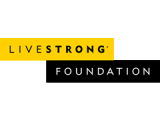
Femina Physical Therapy in the Media
Heather Jeffcoat, DPT and the team at Femina PT are routinely sought out by major online sources, print publications, and broadcast media for our knowledge of all things related to pelvic health. The recognition we have received as leading experts in our field has resulted in appearances on "Loveline with Mike and Dr. Drew" , US News & World Report, Huffington Post, ABC News, Cosmopolitan, Women’s Health, Bustle, "Sex With Emily" with Dr. Emily Morse, and in New York Magazine and Health Magazine, to name but a few. The demand for our expertise is greater than ever as more and more women seek to remedy the issues that we work with on a daily basis.
As Featured In:
- Details
- Written by: Heather Jeffcoat, DPT
- 277 Views

Heather Jeffcoat, DPT
Traveling With Endometriosis Can Be a Challenge!
From portable heating pads to contoured pillows, here's what I turn to when my symptoms flare up on the road.
Dealing with endometriosis on a daily basis, or even just during that time of the month, can really put a cramp on your lifestyle. When Megan reached out to me for some travel tips, I was glad to give some insights into how to make the whole experience the best that it can be. She begins the article with:
Read more: Conde Nast | Traveling With Endometriosis: The Packing...
- Details
- Written by: Anna Larson, PT, DPT
- 317 Views

Anna Larson, DPT
These Safe Sit-Up Alternatives Will Help Strengthen Your Core
When most people think of a strong core or achieving abs, the first exercise that comes to mind is often sit-ups. While sit-ups have long been a go-to for strengthening the core, they're not always the most effective or safest option for everyone. Proper form and technique are key to maximizing the benefits of sit-ups while avoiding strain on the back and neck.
- Details
- Written by: Heather Jeffcoat, DPT
- 134 Views
If you're looking for some insight on what might be causing your pelvic floor dysfunction, this article has plenty of valuable information.
Our founder, Heather Jeffcoat, DPT emphasizes that the first thing to address is what is causing pelvic floor weakness. She says,
“Not every person should start with strengthening the pelvic floor right away. For example, somebody that has a hypertonic pelvic floor would need to perform pelvic floor muscle...relaxation exercises prior to beginning a strengthening routine.”
Read on for more!
- Details
- Written by: Heather Jeffcoat, DPT
- 135 Views
If you're curious about what exercise might look like postpartum, this article is for you.
Femina's founder, Heather Jeffcoat, DPT tells Patient that it's important to pace yourself, especially if you're experiencing any of the following symptoms:
Exercise that causes pain or bladder leakage
An increase in postnatal bleeding
Heather emphasizes listening to your body and visiting a pelvic floor physical therapy specialist for more personalized exercises and care.
Click here to read the full article.
- Details
- Written by: Heather Jeffcoat, DPT
- 161 Views
If you're tired of tried and true sex positions, look no further than this Women's Health article featuring Femina Physical Therapy's very own, Sarah Bellon, DPT.
She recommends the Side-Lying Lover as an option for people who recently had a vaginoplasty. If you’re trying vaginal penetration for the first time post-surgery, she tells WH's Gabrielle Kassel,
“[P]ositions that encourage you to relax your hips and pelvic floor may be the most comfortable."
Click here for more tips and tricks!
- Details
- Written by: Heather Jeffcoat, DPT
- 134 Views
If you're coping with urinary leakage, you're definitely not alone.
As our founder, Heather Jeffcoat, DPT tells Tabitha Britt of Well + Good,
"Urinary incontinence is not just an 'old lady' issue. Young athletes have high rates of urinary incontinence, as well as bowel (fecal) incontinence."
And yet, incontinence is still deemed taboo for a variety of reasons, including:
Societal expectations and norms
General embarrassment and fear, especially of aging
Limited access to information on the subject
Systemic barriers in health care
Read the full article for more information on how doctors and patients alike can take steps to normalize and alleviate symptoms of incontinence.
And as always, please feel free to Schedule with one of our physical therapists for an assessment and treatment plan. We hope to see you soon!
- Details
- Written by: Heather Jeffcoat, DPT
- 141 Views
Disposable heating patches work wonders during painful periods.
SELF writer, Gabrielle Kassel tried out DeoDoc's Menstural Disposable Heating Patches so you don't have to... and she loves them!
Though our founder, Heather Jeffcoat, DPT reassures us that cramping during your period is totally normal, there's nothing that says it needs to be suffered through.
Check out the rest of the article for more quotes from Heather, and more information about these awesome pain-relieving patches.
- Details
- Written by: Heather Jeffcoat, DPT
- 496 Views

According to First For Women writer, Chad Birt, "Researchers estimate that up to 84% of women suffer from painful sex after menopause." Founder of Femina Physical Therapy, Dr. Heather Jeffcoat explains that pelvic floor weakness might coincide with the hormonal changes and thinning tissue experienced during and after menopause. Moreover, she says that this weakness can lead to prolapse, which causes a bulge in the vagina and “creates discomfort during sex, as well as during daily activities.”
Read more: First For Women | Sex After Menopause Shouldn't Be Painful




























































































